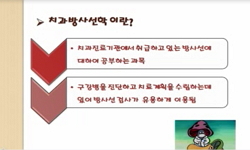Background and Objectives: To describe all possible facets of non-organic hearing disorders (NOHD) and emphasize the superiority of auditory steady-state response (ASSR) over previously employed hearing assessment tools. Subjects and Methods: A series...
http://chineseinput.net/에서 pinyin(병음)방식으로 중국어를 변환할 수 있습니다.
변환된 중국어를 복사하여 사용하시면 됩니다.
- 中文 을 입력하시려면 zhongwen을 입력하시고 space를누르시면됩니다.
- 北京 을 입력하시려면 beijing을 입력하시고 space를 누르시면 됩니다.


Is Auditory Steady-State Response Testing the Key for Diagnosing Non-Organic Hearing Disorders? Implications for Current Audiological Practice
한글로보기https://www.riss.kr/link?id=A108517024
-
저자
Plioutas John (Department of Otorhinolaryngology, Attikon University Hospital, Athens, Greece) ; Vlastarakos Petros V. (Department of Otorhinolaryngology, MITERA Paediatric Infirmary, Athens, Greece) ; Delidis Alexandros (Department of Otorhinolaryngology, Attikon University Hospital, University of Athens, Athens, Greece) ; Vasileiou Alexandra (Clinic of Pediatric Hearing Loss, Attikon University Hospital, Athens, Greece) ; Nikolopoulos Thomas P. (Department of Otorhinolaryngology, Attikon University Hospital, University of Athens, Athens, Greece) ; Maragoudakis Pavlos (Department of Otorhinolaryngology, Attikon University Hospital, University of Athens, Athens, Greece)
- 발행기관
- 학술지명
- 권호사항
-
발행연도
2022
-
작성언어
English
- 주제어
-
등재정보
KCI등재,SCOPUS,ESCI
-
자료형태
학술저널
-
수록면
61-67(7쪽)
- DOI식별코드
- 제공처
-
0
상세조회 -
0
다운로드
부가정보
다국어 초록 (Multilingual Abstract)
Background and Objectives: To describe all possible facets of non-organic hearing disorders (NOHD) and emphasize the superiority of auditory steady-state response (ASSR) over previously employed hearing assessment tools. Subjects and Methods: A series of seven patients consisting of three males and four females with NOHD were assessed at Attikon University Hospital (age range: 17-59 years). Three patients had Munchausen syndrome, three intentionally feigned hearing loss, and one intentionally feigned normal hearing. The audiological evaluation consisted of tympanometry, pure-tone audiometry, and ASSR testing.Results: The hearing of all patients was accurately determined using ASSR. The results were confirmed by auditory brainstem responses (ABR) and otoacoustic emissions. Conclusions: NOHD is a multi-faceted condition encompassing various etiologies. ASSR testing represents an objective and reliable method of hearing assessment, which can serve as a gold standard method for distinguishing NOHD from actual hearing loss. It can reliably indicate the hearing levels at the four main frequencies (500, 1,000, 2,000, and 4,000 Hz) by obtaining a valid estimated audiogram through statistical measures. Compared to ABR testing, ASSR thresholds are closer to the actual audiometric thresholds in the presence of hearing impairment and are superior when the corresponding pure-tone audiogram is widely ranging between the adjacent frequencies or when the obtained ABR curves are not easily distinguished. A non-confrontational approach should be adopted by ENT doctors towards cases of suspected NOHD as the use of ASSR could reliably assess hearing even when medical or medico-legal implications are involved.
참고문헌 (Reference)
1 Vlastarakos PV, "The value of ASSR threshold-based bilateral hearing aid fitting in children with difficult or unreliable behavioral audiometry" 96 : 464-468, 2017
2 Rance G, "The auditory steady-state response: generation, recording, and clinical application" Plural Publishing 152-, 2008
3 Kemp DT, "Stimulated acoustic emissions from within the human auditory system" 64 : 1386-1391, 1978
4 Mehta AK, "Screening tests for nonorganic hearing loss" 56 : 79-81, 2000
5 Musat G, "Hearing assesment of a malingering patient" 21 : 41-46, 2013
6 Gelfand SA, "Functional hearing loss and its relationship to resolved hearing levels" 6 : 151-158, 1985
7 Dimitrijevic A, "Estimating the audiogram using multiple auditory steady-state responses" 13 : 205-224, 2002
8 Durmaz A, "Efficiency of Stenger test in confirming profound, unilateral pseudohypacusis" 123 : 840-844, 2009
9 Tiffany WR, "Delayed speech feedback as a test for auditory malingering" 115 : 59-60, 1952
10 Brown K, "Definition of ‘deception’. The Cambridge Dictionary of Linguistics" Cambridge University Press 2019
1 Vlastarakos PV, "The value of ASSR threshold-based bilateral hearing aid fitting in children with difficult or unreliable behavioral audiometry" 96 : 464-468, 2017
2 Rance G, "The auditory steady-state response: generation, recording, and clinical application" Plural Publishing 152-, 2008
3 Kemp DT, "Stimulated acoustic emissions from within the human auditory system" 64 : 1386-1391, 1978
4 Mehta AK, "Screening tests for nonorganic hearing loss" 56 : 79-81, 2000
5 Musat G, "Hearing assesment of a malingering patient" 21 : 41-46, 2013
6 Gelfand SA, "Functional hearing loss and its relationship to resolved hearing levels" 6 : 151-158, 1985
7 Dimitrijevic A, "Estimating the audiogram using multiple auditory steady-state responses" 13 : 205-224, 2002
8 Durmaz A, "Efficiency of Stenger test in confirming profound, unilateral pseudohypacusis" 123 : 840-844, 2009
9 Tiffany WR, "Delayed speech feedback as a test for auditory malingering" 115 : 59-60, 1952
10 Brown K, "Definition of ‘deception’. The Cambridge Dictionary of Linguistics" Cambridge University Press 2019
11 Goetzinger CP, "Deafness; examination techniques for evaluating malingering and psychogenic disabilities" 59 : 95-101, 1958
12 Nober EH, "Communication Disorders" Springer 275-297, 1981
13 Stapells DR, "A Sound Foundation Through Early Amplification" Phonak 67-105, 2010
동일학술지(권/호) 다른 논문
-
- 대한청각학회
- Song Hyunwook
- 2022
- KCI등재,SCOPUS,ESCI
-
- 대한청각학회
- Tinazli Remzi
- 2022
- KCI등재,SCOPUS,ESCI
-
Expansion to the Motion Sickness Susceptibility Questionnaire-Short Form: A Cross-Sectional Study
- 대한청각학회
- Ugur Emel
- 2022
- KCI등재,SCOPUS,ESCI
-
Migraine-Associated Otalgia: An Underappreciated Entity
- 대한청각학회
- Sussman Sarah
- 2022
- KCI등재,SCOPUS,ESCI




 KCI
KCI






